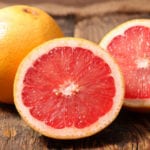 Mysteries
Mysteries  Mysteries
Mysteries  History
History 10 Surprising Stories About the Texas Rangers
 Humans
Humans 10 Philosophers Who Were Driven Mad by Their Own Theories
 Miscellaneous
Miscellaneous 10 Video-Game-Worthy Weapons and Armors from History
 Weird Stuff
Weird Stuff 10 Psychics Who Accurately Predicted Wartime Events
 The Arts
The Arts 10 Pieces of Art Inspired by a Broken Heart
 Health
Health 10 Science Fiction-Sounding New Medical Treatments
 History
History 10 Surprising Facts About the Father of Submarine Warfare
 Space
Space Ten Astonishing New Insights into Alien Worlds
 Weird Stuff
Weird Stuff 10 Bizarre Summer Solstice Rituals Still Practiced Today
 Mysteries
Mysteries Top 10 Haunting Facts About the Ghost Ship MV Alta
 History
History 10 Surprising Stories About the Texas Rangers
 Humans
Humans 10 Philosophers Who Were Driven Mad by Their Own Theories
Who's Behind Listverse?

Jamie Frater
Head Editor
Jamie founded Listverse due to an insatiable desire to share fascinating, obscure, and bizarre facts. He has been a guest speaker on numerous national radio and television stations and is a five time published author.
More About Us Miscellaneous
Miscellaneous 10 Video-Game-Worthy Weapons and Armors from History
 Weird Stuff
Weird Stuff 10 Psychics Who Accurately Predicted Wartime Events
 The Arts
The Arts 10 Pieces of Art Inspired by a Broken Heart
 Health
Health 10 Science Fiction-Sounding New Medical Treatments
 History
History 10 Surprising Facts About the Father of Submarine Warfare
 Space
Space Ten Astonishing New Insights into Alien Worlds
 Weird Stuff
Weird Stuff 10 Bizarre Summer Solstice Rituals Still Practiced Today
10 Fascinating Facts You Didn’t Know About Fruits
Fruits are an absolutely necessary part of a healthy diet. As such, we often overlook some fascinating facts about just what it is we’re eating. We take it for granted that oranges are orange and an apple a day will keep the doctor away. You may not even know that we’ve been eating the exact same banana for 50 years. And have you ever wondered how much money perfect fruit can go for? The answer may surprise you. Here are 10 bizarre facts about nature’s candy.
10The Durian’s Aphrodisiac Qualities
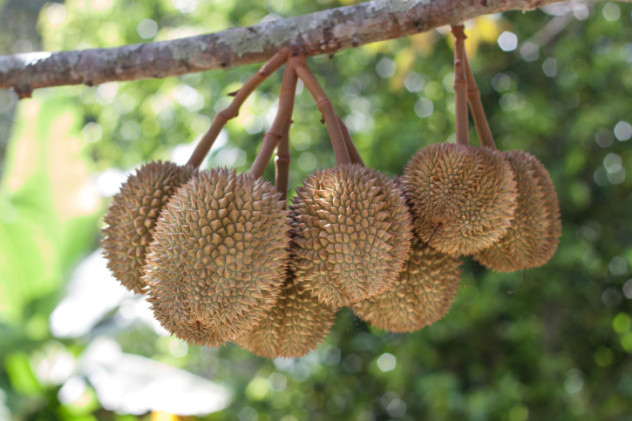
The durian is a fruit from Southeast Asia that’s well known for its toxic smell. It’s so bad that it’s banned from many public places in Asia, and just carrying it with you can get you thrown out of the area. Lesser known, however, is the long-held belief that the stinky fruit is a powerful aphrodisiac.
Known as “the King of Fruits,” it’s a particular belief among the Javanese that eating the durian will cause a powerful and immediate effect on a person’s libido. Eating the silky and smooth flesh of the fruit is said to be a sensual experience, made even more powerful by the durian’s rich and complicated flavors. According to the Javanese saying, “When the durians fall, the sarongs come up.”
The legend took root when people observed animals eating durian and the amorous mating that inevitably followed, and it turns out there’s something to the myth. Durian contains high levels of tryptophan, which the body converts into the happiness hormone serotonin, making pleasurable experiences even more pleasurable when present. When researchers in India decided to look into the effect of durian on mice, they found that there was a marked increase in libido and fertility in male mice who were fed durian regularly over a two-week period.
9Bananas Are Too Perfect
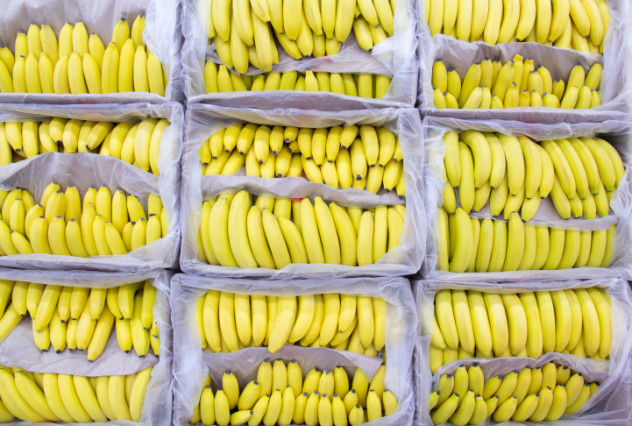
Genetic diversity is the key to the longevity of a species. Unfortunately, that’s something that bananas no longer have. While there are more than 300 different types of bananas, there’s one that accounts for the overwhelming majority that are consumed in Europe, Canada, and the United States: the Cavendish. It’s tasty, it’s convenient, and it’s grown all over the world, from Hawaii to Thailand to Central America.
The problem is that every single Cavendish banana, no matter where it’s grown and where it comes from, is genetically identical. That means it’s vulnerable. With no genetic differences, a single fungus or disease could wipe out the world’s population of the most popular banana—and it’s already happened once. The Gros Michel held the position as one of the most popular bananas in the world until a fungal disease wiped out nearly every Gros Michel banana plant, devastating the economies of banana-producing countries like Honduras. Billions of dollars were funneled into the banana industry to find a replacement for the devastated Gros Michel.
Despite attempts to create a hardier, more genetically varied variety of banana, the Cavendish still faces the same type of extinction as its predecessor. Part of the problem is that bananas don’t reproduce from seeds, as those have long since been bred out of the fruit for taste and convenience. Instead, bananas are largely hand-pollinated, and fruit-bearing bushes will regrow stems and stalks for years, limiting the amount of genetic diversity in the crop. Also problematic are the origins of the banana: Virtually all modern bananas are mutations derived from a handful of only about 10 plants that were originally cultivated on the African continent.
8Perfect Fruit Can Be A Big Deal
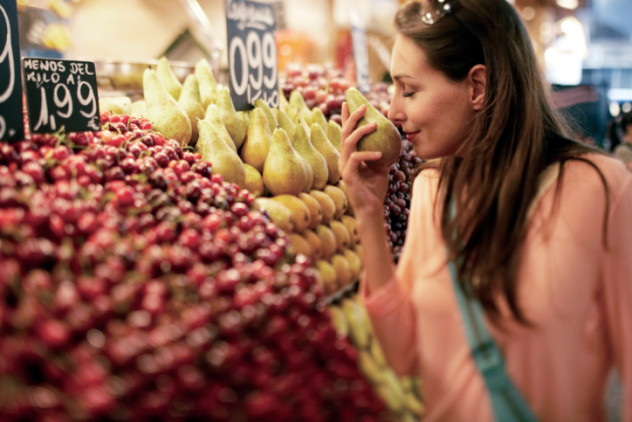
In Japan, fruit is often given as gifts between family members, friends, colleagues, and business partners. It’s seen as a luxury, and the better the specimen of fruit that’s given, the more memorable the gift becomes. So it’s not all that surprising that there’s a store in Japan, called Senbikiya, that specializes in only the most perfect specimens of fruit. Not only are the fruits sold at the store free of blemishes and bruises, they must be perfectly formed, and most are so large and flavorful that they look fake to someone not used to seeing the height of fruit perfection.
A box of 12 strawberries runs about $83, and three melons will set you back about $419. You’re not just paying for perfection, you’re paying for the massive amounts of labor that goes into growing these fruits. Japanese-grown fruits are more highly desired than imports, and greenhouse keepers labor 24 hours a day, 365 days a year to ensure that their plants are grown from only the finest, strongest seedlings. They work tirelessly to determine that each plant has a precise amount of nutrients and the temperature in their greenhouses is maintained constantly. In some cases, all that effort goes into a single vine or plant that produces a single specimen of fruit. Some of them are even given little hats to wear to protect them from the outside sun, ensuring a perfect, evenly colored exterior.
7Most Berries Aren’t Berries
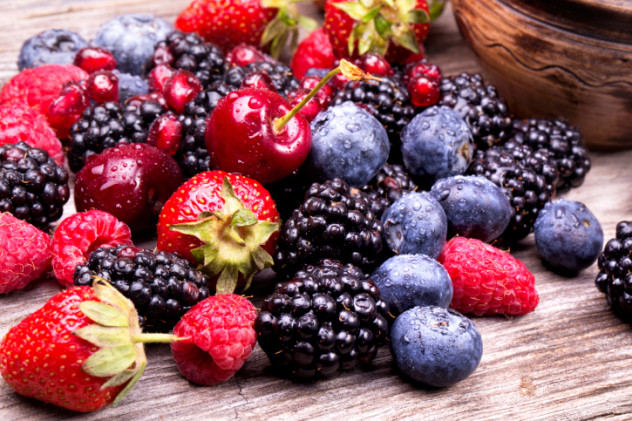
Strawberries, blueberries, blackberries, cranberries, raspberries—there aren’t many foods that can be so easily defined. After all, they have “berries” right in the name. However, by the botanical definition, many fruits that we think of as berries aren’t actually berries. A berry is defined as a fruit that possesses a fleshy interior and an outer skin, and it’s formed by the entirety of the ovary of the plant. That means that grapes, avocados, eggplants, bell peppers, tomatoes, and even chili peppers are botanically classified as berries.
Cranberries, blueberries, and gooseberries are what’s known as “false berries,” which means they form from a plant ovary, just not the superior ovary that would classify them as true berries. These berries also form partially from the tube attached to the ovary, further excluding them from true berry classification. Raspberries and blackberries are technically drupelets, which means they are fleshy fruits with a thin skin that contain several seeds with hard exteriors. They’re also aggregate fruits, meaning that more than one fruit can come from a single flower. Strawberries are accessory fruits called pseudocarps, which means they are formed from a combination of ovarian and non-ovarian plant tissues and have structures called achenes on their skin.
6Oranges Usually Aren’t Orange
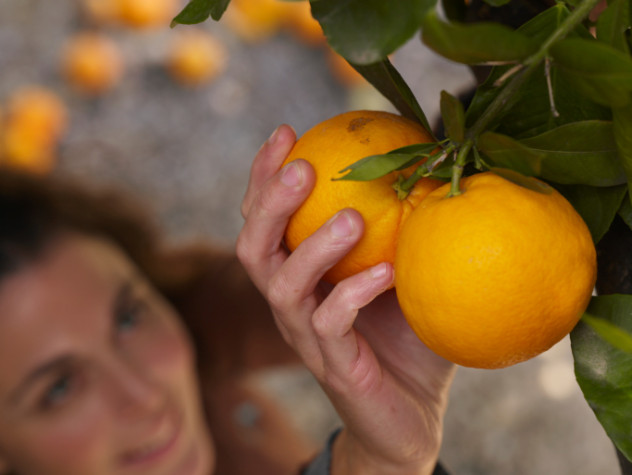
The color orange may have been named for the fruit, but the irony is that oranges usually aren’t the color orange. The color orange wasn’t defined until 1542, when it was cobbled together from words that had previously been used to refer to the fruit. Its first form was the Arabic word naranj and the Persian narang, which were both derived from a Sanskrit word, naranga.
Strangely, though, most oranges that come from their native tropical countries aren’t orange at all. In their natural, ripe state, in the warmer countries where they’re grown, the outside of the orange is full of chlorophyll, making it green. In colder areas, the chlorophyll is killed by the cold weather, and similar to the leaves on a deciduous tree, the orange color of the flesh inside emerges through the green. It’s actually the green oranges that are ripe, and those that turn orange are on their way downhill from their peak period of ripeness. Our associations don’t help matters, either: Many people in the United States and Europe think of green fruit as being unripe, so some orange crops are turned orange unnaturally, exposed to flash freezing or ethylene gas to get rid of the chlorophyll in the skins.
5The Cherry That Deceived The Devil
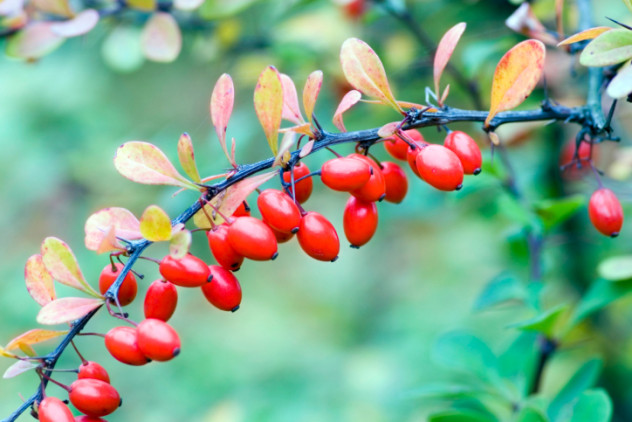
The Cornelian cherry comes from an ornamental tree that’s closely related to the dogwood, and it’s one of the most ancient of fruits with a long history. When cherries are mentioned in ancient Greek, Roman, and Persian texts, it’s this kind of cherry that they’re referring to. Overwhelmingly sweet, they’re commonly made into syrups, jams, jellies, and confectioneries rather than eaten straight like more familiar types of cherries. In Eastern Europe, they’re often used for wine and vodka, while they’ve also been pickled alongside olives and used the same way. They’ve been popular throughout Russia, Asia, and the Byzantine Empire.
They’re also part of a Turkish legend about the devil. According to the story, when Satan first came to Turkey, he saw that the Cornelian cherry trees were the first to be covered with blossoms in the springtime. He thought that, since the blossoms were the first to appear, the tree would be the first to bear fruit. He sat beneath the tree and waited, while other trees around him blossomed and bore fruit. By the time he realized that the Cornelian cherry tree was the last to ripen at the end of the summer, he was more than a little angry. Ever since, the Cornelian cherry has been called Seytan alditan agaci, or “the tree that deceived Satan.”
4Watermelons Have Long Been A Water Source
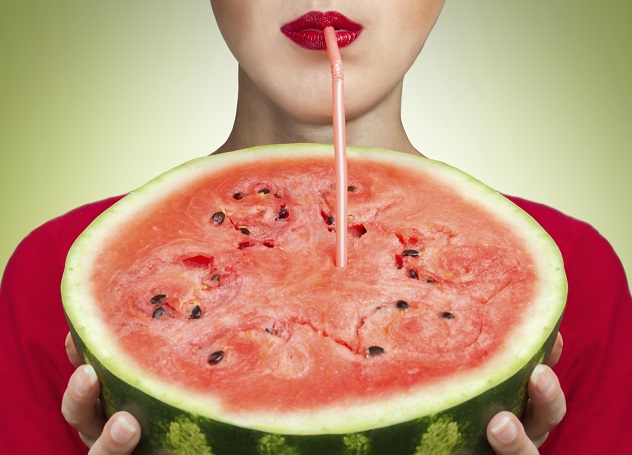
While we might think of watermelons today mostly as a tasty treat on a hot summer day, they were first cultivated for a very practical reason. Some of the earliest references to the cultivation of watermelons can be found in Egyptian hieroglyphics dating back more than 5,000 years. Cultures across Africa, India, and the Mediterranean all have records referring to the watermelon as well. It was David Livingstone who confirmed the origin of the watermelon, though, when he found wild fields growing in Africa.
Watermelons thrive in dry areas, and they have long served a very important purpose beyond just being a healthy part of a meal. Watermelons are about 92 percent water, and in many dry areas of Africa, the fruit has long been tapped and used as a water source for both people and animals. Evidence has even been found that they were carried by explorers as a sort of naturally occurring water bottle. Another advantage of watermelons is that there is no waste, and all of the fruit can be eaten. Aside from the juicy flesh, the seeds can be roasted, and even the rind can be made into preserves. In some areas, it’s pickled and jarred or brined to preserve it. The sweet juice from a watermelon is used for making beer in Russia, and it can also be used as a base for syrups.
3Mom Was Right About Apples
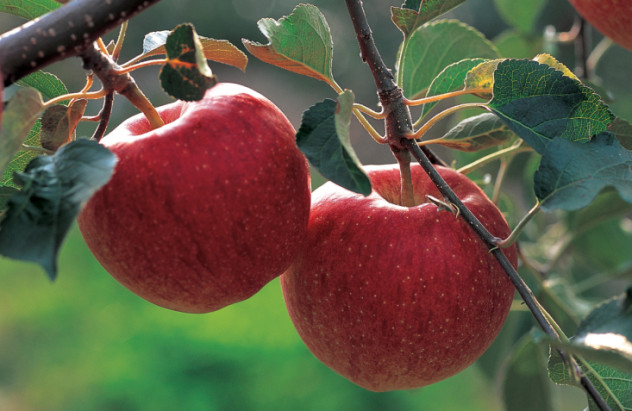
We’ve all heard that an apple a day keeps the doctor away. We’ve heard it so many times, in fact, that it’s easy just to chalk it up as another wives’ tale that’s been repeated for centuries. There’s plenty of scientific evidence that it’s the absolute truth, though, and eating apples on a regular basis can provide you with some health benefits that even Mom probably didn’t think about.
A study from Florida State University has shown that eating just a handful of dried apples over a six-month period will result in a drastic lowering of bad cholesterol, and the same study showed a correlation between apples and weight loss. We all know that apples are full of good things like vitamin C, but what does that mean in the long run? Long-term studies have shown that those who eat apples have a lower risk of stroke, improved respiratory function, and an easier time maintaining a healthy weight. Apples can also reduce the risk of some cancers by as much as half, improve brain function and cellular health, prevent the development of dementia and related diseases, and reduce a person’s risk of developing diabetes.
Regular, boring apples are sometimes overshadowed by some of the more trendy super-fruits, but their history suggests that their health benefits have been known for centuries. Remains of apples have been found in prehistoric settlements dating back to 6,500 B.C., and we can still taste some of the same varieties of apples our ancient ancestors enjoyed.
2Chimpanzees Value Forbidden Fruit
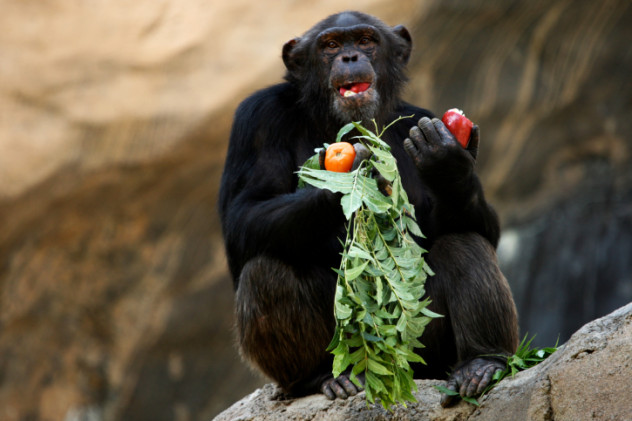
We’re all familiar with the biblical story of Adam, Eve, and the forbidden fruit, but it turns out that the idea of forbidden fruit is a bit of a turn-on for chimpanzees, too. Researchers from the University of Stirling in Scotland examined the courtship habits of chimpanzees in the wild and found that it really drove the ladies wild when a male brought her some fruit.
Not just any fruit would do, though, and the most favors were given out for fruit that was stolen from nearby human farms. The study followed the behavior of chimps who lived outside of a village in the Republic of Guinea. Males would nervously head into town, steal papayas, and take them back to their lady friends. The result was a high likelihood of grooming and sex offered by the female.
Researchers believe that it’s not just the food that she’s appreciating but the rebellious behavior as well, although they were never truly in danger of harm from their chimp-revering human neighbors. When males found food in the wild, they were much less likely to return with it as an offering to a ready and willing female, but stolen fruit was a highly valued prize. While papayas were the most commonly offered and shared, they also showed preference to pineapples and oranges.
1The Storied History Of Guarana
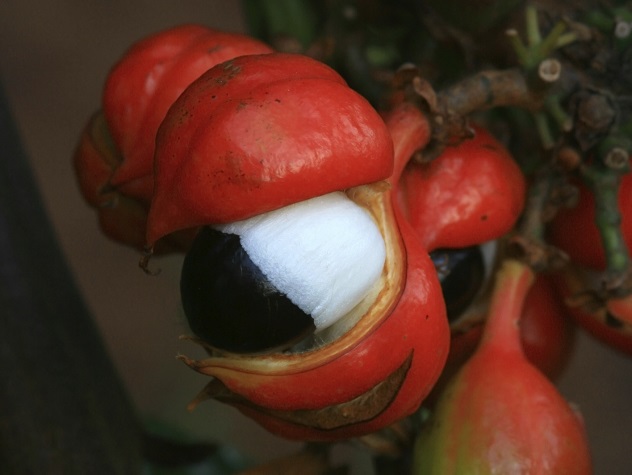
If you look at the contents of any energy drink, chances are that guarana is listed as one of the main ingredients. We see it all over today, and most of us drink it without thinking all that much about it. But it has a long and rather storied history and mythology.
According to legend, the uniquely creepy-looking fruit grew from the eye of a murdered boy. It’s not a stretch to see how that came about, as it does look like a wide, rolling, bloodshot eyeball. You may have heard of guarana being used as an aphrodisiac, usually in the form of a drink with other ingredients like nuts and bird eggs, but that’s actually a fairly recent use for the berry, almost as recent as its emergence in energy drinks. European missionaries in 17th-century Brazil recorded the native people’s use of the berry, noting that it not only gave them energy but allowed them to go for days without feeling hungry. It became a colonial trading commodity that was said to help protect the body from illness, but too much of it was known to cause insomnia.
The caffeine that’s found in the guarana berry is thought to be different from the caffeine found in coffee. Guarana contains chemical components called tannins, which are thought to produce a longer-lasting effect than caffeine from other sources. For countless centuries, guarana berry seeds have been powdered or smoked in a long process that is done by hand. Drinking properly prepared guarana can be central to formal occasions and gatherings, where groups of people pass around a calabash bowl—quite a difference from the chugging of energy drinks that much of the world does today.








